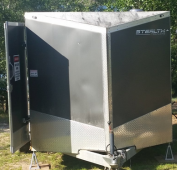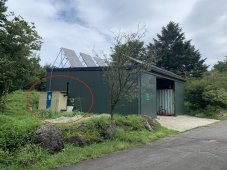Thanks for the information. I thought for a long time about insulation and a fan setup. Our air in the summer is filled with hot water, and tends to run about 95*F for several months. I worry that the batteries would still be over 90 with insulation and fans. That is only 32*C, but I would still prefer to keep them under 30*C if possible, with a goal of 25*C year round.
It is my understanding after doing some pretty deep research of good sources that there is a minimal, if any , difference between the batts performance at 77 F and 90 F. This is not meant to challenge common thought about heat affecting a batts ability's. I don’t want to open that door and start fights. . , BUT from the graphs I saw the lifepo operated about the same in a range of 75 to about 90+ …I’m not addressing longevity , cycle life and other things ,as that is a huge , lengthy and controversial issue. I am aware of different opinions on this ,but I am just saying what I have arrived at from test it in my gear and what I have researched..
I have no problem at all knowing my batts may get in the 90 F area.. it’s only 13 degrees difference than what your talking , and both temp are in the “fat middle zone “of acceptable for normal performance.
Later this summer I am going to test putting a white simi reflective tarp over the top and sides of the trailer .. It should lower the external surface black paint temp a large amount.. I don’t need to do it but I want to know if that affects the conductive heat coming through the insulation. I don’t know , but I want to to find out.
My goal is to keep the batts and gear in the trailer between 45F and 90F and not OCD over it. So far, for a year, it’s been better than I hoped for.
If that cannot be attained I can always briefly add an extra lightbulb in winter during a very cold snap with no problem. It just doesn’t get over about 85 to 90 here so that isn’t a prob… ALSO if you insulate the trailer ( you better) , study on it , don’t cheap out , do solid and quality work and leave at least some air gap in the sandwich, I’m amazed how well it keeps out heat or cold .
Good luck in your efforts.
Jim.






